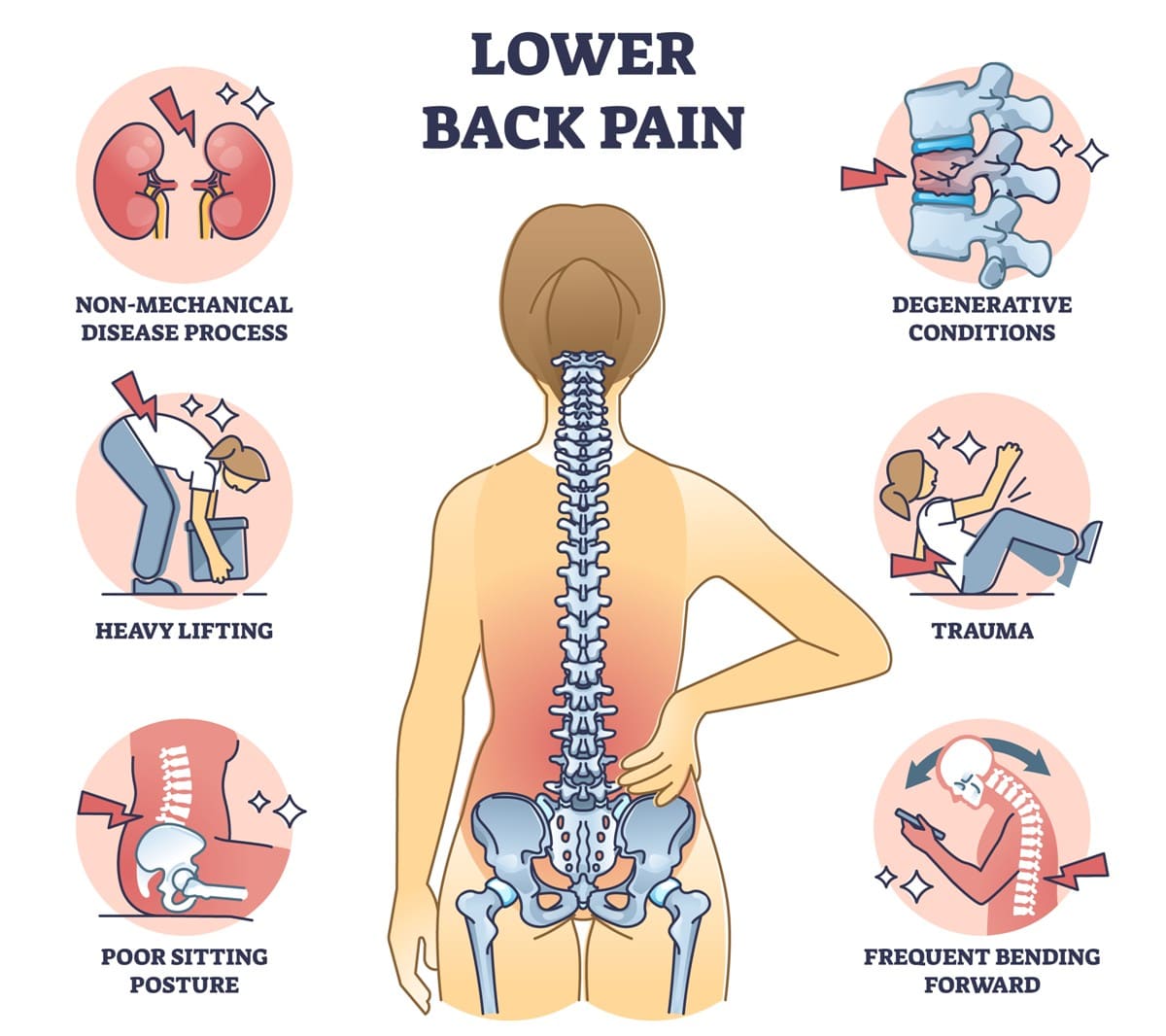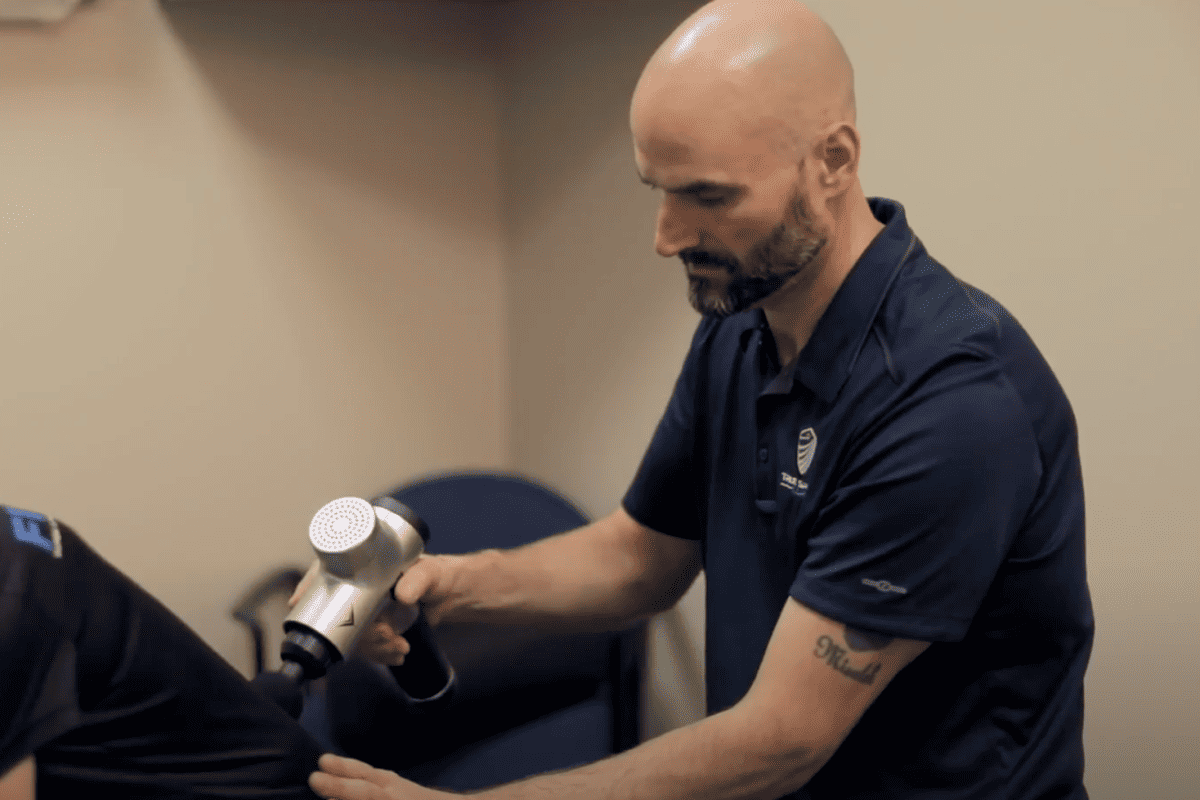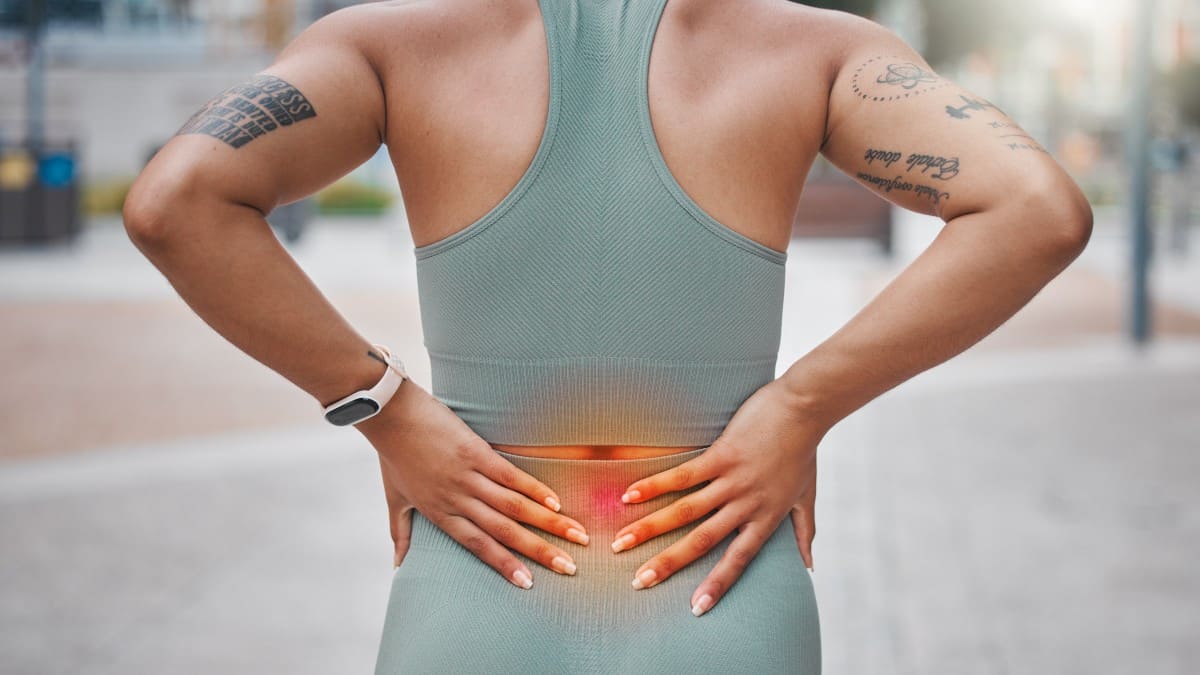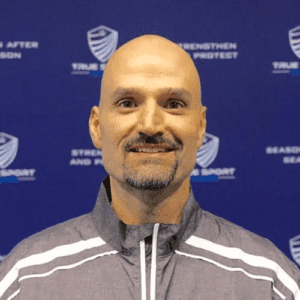Let’s get real – lower back pain can be a stubborn, frustrating beast. If you’ve been dealing with it, you know exactly what I’m talking about. You might’ve tried resting, stretching, or popping a few pills, but the pain just keeps coming back. It’s no wonder that so many people end up in our office, desperate for a solution that actually works.
Here’s the reality: lower back pain is one of the most common health complaints worldwide. In fact, studies show that up to 80% of people will experience lower back pain at some point in their lives. It’s the leading cause of disability, keeping millions of people from work, hobbies, and even basic daily activities. Whether it’s from sitting too long, lifting something the wrong way, sports injuries, or just the wear and tear of life, almost everyone is at risk. But just because it’s common doesn’t mean you have to live with it.
In this article, we’re going to explore the best effective treatment options that can help you break free from the cycle of pain and get back to living your life.

Common Causes of Lower Back Pain
When a new patient complains of lower back pain, we start with a thorough physical examination, muscle testing, and collecting specific “clues” of what could be causing lower back pain (or any other muscular complaint that we see in our chiropractic office.) Our treatment produces the best long-lasting results when we discover the root cause of the problem and effectively fix it. You can be your own detective as well and see if any of the common lower back pain causes below are the culprits of your achy back and stiffness.
Sedentary Lifestyle
It’s often said that sitting is the new smoking. I’m not sure I entirely agree with that, but it’s a catchy phrase that highlights a real problem. Our bodies weren’t designed to be sedentary.
A lack of movement weakens your muscles, tightens your hip flexors, and throws your posture out of alignment – all of which contribute to low back pain. Your lymphatic system, which relies on muscle contractions to pump fluid, essentially goes on strike when you’re not moving. The blood flow can decrease, which will jeopardize nutrient and oxygen delivery to the spinal discs and surrounding tissues. Finally, sitting for too long can cause nerve compression leading to sciatica or lower back pain.
Poor Posture and Habitual Movements
Sitting slouched over your computer or adopting other habitual postures might seem harmless, but over time, these habits can wreak havoc on your lower back. Take, for example, a young patient who struggled with episodic lower back pain for years. Despite completing physical therapy, his pain would return just weeks later. The culprit? His habit of sitting with one leg folded underneath him at his desk job. This asymmetrical sitting position, likely rooted in an old injury, was creating a cycle of discomfort. When you consistently sit or stand in positions that strain your spine, your muscles and ligaments have to work overtime to keep you upright, leading to chronic pain and discomfort. Addressing these habits – whether it’s improving your posture or breaking the cycle of harmful movements—can make a huge difference in preventing lower back pain.
Muscle Imbalances and Weak Core
The most common reason I see for lower back pain is that people don’t have a good understanding of how their core is supposed to work. Your core is the most important control system in your body, and it’s misused all the time. Here’s a quick exercise to illustrate: Sit down and arch your spine back as far as you can. Feel that stress in your lower back? Now, place your hands on your sides and cough – you should feel your hands move as your core bracing muscles engage. If you engage that core bracing sensation first and then try to arch back, you’ll notice the stress shifts higher. This is because your core should be the first thing that fires every time. Unfortunately, most people don’t use their core correctly, leading to lower back pain.
Compensatory Patterns in Your Muscles
Compensation is another major reason for lower back pain. When muscles like your hamstrings or gluts are weak, your lower back ends up doing more work than it should. This overcompensation can lead to chronic pain and discomfort as your back struggles to make up for the deficiencies in other areas.
Sports Injuries
We see many athletes with low back pain in our office. In many cases, the root of the problem can be traced down to not being able to engage core muscles correctly which we discussed in detail already. Another cause of sports-related lower back pain are muscle strains from violent/jerking movement which causes one or more back muscles, tendons or ligaments to stretch or tear. Whether it’s a sudden injury from lifting incorrectly or chronic pain from repetitive movements, sports-related lower back pain is all too common.
Work-Related Strain
Your job could be a major factor contributing to your lower back pain. Whether you’re sitting at a desk all day or engaging in physically demanding work, repetitive motions and poor ergonomics can lead to chronic back issues. For desk workers, long hours of sitting with poor posture can weaken your core and strain your lower back. For those in more physical jobs, lifting heavy objects, bending, or twisting improperly can result in acute injuries or long-term damage. Addressing these work-related issues is crucial to preventing and managing lower back pain.
Injury or Overuse
Whether it’s from lifting something heavy with poor form, a sudden jerking move, or just overdoing it in the gym, injuries are a common cause of lower back pain. From daily activities like housework to car accidents, there is no shortage of examples of how a person can get a lower back injury.
Herniated Discs
The discs in your spine act as cushions between the vertebrae. But when a disc becomes damaged or herniated, it can press on the surrounding nerves, leading to sharp pain, numbness, or tingling in the lower back and down the legs.
Degenerative Disc Disease
As we age, the discs in our spine naturally wear down, losing their cushioning ability. This can lead to pain and stiffness in the lower back, especially during movement.
Pregnancy and Postpartum
Many women experience lower back pain during the late stages of pregnancy and soon after delivery due to the significant changes that occur in a woman’s body. As the baby grows, the additional weight places extra stress on the lower back and pelvis. Additionally, hormonal changes, particularly the increase in relaxing, cause the ligaments in the pelvis to loosen and the spine to become less stable, leading to discomfort and pain. After childbirth, the body’s alignment and muscle strength take time to return to their per-pregnancy state. Couple that with constant bending to pick up the baby, and carrying heavy car seats and diaper bags on one shoulder, and you have a perfect recipe for lower back pain that many new moms experience.
Anatomy of the Lower Back
The lower back, or lumbar region, consists of five vertebrae labeled L1 to L5. These vertebrae support much of the body’s weight and allow for a range of movements. Between the vertebrae are intervertebral discs, which act as shock absorbers and provide cushioning.
The lumbar spine is surrounded by several muscles, including the erector spine, which helps with extension and lateral movement, and the multifidus, which supports spinal stability. The lower back also includes major ligaments like the anterior and posterior longitudinal ligaments, which help stabilize the spine.
Nerves from the lumbar region exit through openings called foramina and contribute to sensations and movements in the lower limbs. Overall, the lumbar spine plays a crucial role in providing strength, flexibility, and stability to the torso and legs.
Function and Mobility of the Lower Back: Why It’s Prone to Injuries
The lower back, also known as the lumbar spine, and core are inarguably the most important structures in the body. Everything is dependent on good core stability. It’s responsible for carrying the weight of your upper body, allowing you to bend, twist, and move in all sorts of directions.
But with this combination of strength and flexibility comes a downside – your lower back is incredibly prone to injuries. It’s under constant pressure, whether you’re sitting, standing, or lifting, which means it’s always at risk. Add in the fact that the lower back has to compensate for weaknesses in other areas, like your core or hips, and it’s no wonder that this area is often the first to complain when something’s off. The very mobility that makes your lower back so essential also makes it vulnerable to strains, sprains, and more serious injuries.
Are you ready to get Rid of Lower Back Pain once and for all?
Book your appointment at True Sport Care and Chiropractic near Smithtown NY and start living a pain-free life again.
How to Diagnose Lower Back Pain
When it comes to diagnosing lower back pain, we don’t just jump to conclusions – or to imaging. At True Sport Care and Chiropractic, we start by taking a close look at how your body is functioning. The first step is to assess for any weaknesses, imbalances, or asymmetries that could be contributing to your pain. These are often the underlying issues that, when corrected, can relieve pain without the need for more invasive measures.
But we don’t stop there. Diagnosing lower back pain, especially if it’s chronic pain that comes back after the initial treatment is over, warrants a more investigative approach. We spend time investigating your lifestyle, your occupation, and your daily habits because these factors often hold the key to what’s really going on. We listen carefully, harvesting clues that can lead us to the root of the problem. In some cases, the treatment we provide is only part of the solution – it’s the deeper understanding of your life and experiences that ultimately makes the difference.
We believe in a hands-on approach, working with you to address the issues one muscle at a time. By guiding you through targeted exercises and corrective techniques, we aim to restore balance and strength to your body. We also make it a point to check in with you weekly to see how you’re progressing. In many cases, patients start to feel better even before we consider imaging like X-rays or MRIs.
However, if your pain persists and you’re not responding to our initial treatment plan, that’s when we take the next step. We might refer you to get an MRI done for your back to get a clearer picture of what’s going on under the surface. This helps us identify if there’s a structural issue – like a herniated disc or spinal stenosis – that needs to be addressed differently. And if the situation calls for it, we’ll refer you to an MD for further evaluation and co-management. Sometimes, breaking the pain cycle might even involve prescription medication, but we only go there when it’s necessary.
Our goal is always to find the most effective, least invasive solution to your pain, using imaging and other tools only when they’re truly needed.
Lower Back Pain Treatment: Should you Address the Bones or Muscles First?
Therapists and chiropractors are always having the chicken-and-egg discussion. Did the muscles move the bones out of place or did the bone cause the muscle spasm? It’s an argument that will NEVER be solved, and whenever that happens it’s because they can not be mutually exclusive with each other. A tight muscle can certainly pull a bone out of place and a bone out of place can certainly cause tight muscles.
Regardless of what happened first, why don’t we simply address both issues? That’s where a comprehensive approach that includes all these modalities proves useful. Let’s reduce the spasm and trigger points with soft tissue techniques. Let’s address the weakness and instability with our specific exercise prescription. And finally, let’s address the misalignments with chiropractic manipulation. Case closed. Full stop.
What To Do When Physical Therapy or Other Treatments Do Not Work for Low Back Pain
One of our favorite (and unfortunately frustrating) experiences is when someone comes in and they have already gone through multiple rounds of physical therapy with no resolution or improvements. In the beginning of the summer, we had a collegiate soccer player come in with low back pain that had not gone away with everything they had tried to that point. Traditional approaches don’t always work. Due to the specificity of our analysis and approach, EVERY patient that comes in reports that they’ve NEVER had treatment like ours.
We looked at the entire kinetic chain and showed this soccer player which weaknesses were being missed by his other practitioners. We coached him on ‘reprogramming” these deficits. Lo and behold, within 2 visits he reported a resolution of his issue. It’s frustrating because not everyone practices this way, but it’s also our favorite because we love showing patients the reasons why their symptoms began.

When it comes to treating lower back pain, a one-size-fits-all approach just doesn’t cut it. At True Sport Care, we know that every patient’s pain has its own story, and we’re here to listen and tailor our treatment to what you need.
1. Spinal Adjustments
These aren’t just about cracking your back and sending you on your way. Spinal adjustments relieve pressures on spinal nerves, and allow the vertebra to move freely without fixations (being stuck). This instantly improves the range of motion and reduces pain. It’s like giving your spine a tune-up so everything runs smoother.
2. Therapeutic Exercises
Our office puts the MOST emphasis on therapeutic exercises. Sure, adjustments are important, but if you want long-term relief, therapeutic exercises are where it’s at. Learning how to move well and reduce compensations will lead to less pain and greater outcomes with less re-occurrence.
3. Soft Tissue Work
In most low back pain scenarios, there will be a muscle that is doing too much and a muscle that is doing too little. We need to reduce the stress on the overused muscle by performing our array of soft tissue manipulations including IASTM, sports massage, and more. The exercises are used for the under-performing or weak muscles.
4. Customized Treatment Plans
Here’s the thing – what works for one person might not work for another. That’s why we don’t do cookie-cutter protocols. With a detailed analysis, we can create a specific plan that best promotes symmetry, balance, and strength. We can have 10 different lower back patients that require 10 different approaches based on our analysis. This is why protocols don’t always work. We care less about a diagnosis and more about its etiology (how it got there in the first place).
At the end of the day, our goal is to get you out of pain and back to living your life. And we do that by focusing on what really matters – helping your body work the way it’s supposed to, so you can feel your best.
How to Prevent Lower Back Pain
Let’s face it – preventing lower back pain is a lot easier than dealing with it once it shows up. The good news is, with the right strategies, you can keep your back healthy and strong, avoiding the pain altogether.
- Move More
You’ve heard me say it before: motion is lotion, stagnation is death. If you’re spending hours at a desk, sitting in meetings, or commuting, you’re setting yourself up for lower back pain. But it doesn’t mean you have to quit your job—you just need a strategy to counteract all that sitting. Think of it as cross-training for your day. Stand up, stretch, and move around every chance you get. And take a good look at your workspace. Is your chair supporting you properly? Is your screen at eye level? Small adjustments can make a big difference in keeping your back pain-free. - Exercise and Stretching
First things first, you’ve got to keep your body moving. Exercising and stretching the right muscles is crucial in preventing lower back pain. If you’ve been dealing with back pain or just want to keep it at bay, I recommend checking out some of my exercise videos. Start with Core I, Core II, Glute Max 2, and Hamstring 3. These exercises are specifically designed to strengthen the muscles that support your lower back. When your core, glutes, and hamstrings are strong and flexible, they take the load off your lower back, reducing the risk of pain.
Should you stop all sports activities or continue exercising with back pain?
Pain doesn’t always require a shutdown. Sometimes working through pain can produce a favorable result. This can only be determined after a thorough assessment with a qualified sports doc. (Like Us!)
Take Control of Your Lower Back Pain
If you’re tired of lower back pain dictating your life, it’s time to take control with the right approach. At True Sport Care Chiropractic and Physical Therapy, we know that every case is unique, which is why we offer personalized care that really works, from spinal adjustments to therapeutic exercises. Our state-of-the-art chiropractic office is located in the Smithtown Township in Suffolk County offering easy access from St James, Nesconset and Hauppauge, and Lake Grove. Don’t wait for the pain to get worse—reach out to True Sport Care, your lower back pain chiropractor in Smithtown, and let us help you find lasting relief. Contact us today and start your journey to a pain-free life.
References
- Atlas SJ, Deyo RA. Evaluating and Managing Acute Low Back Pain in the Primary Care Setting. J Gen Intern Med. 2001;16(2):120-131. doi:10.1111/j.1525-1497.2001.91141.x.
- Patel ND, Broderick DF, Burns J, Deshmukh TK, Harvey HB, Holly L, et al. ACR Appropriateness Criteria Low Back Pain. J Am Coll Radiol. 2016;13(9):1069-1078. doi:10.1016/j.jacr.2016.06.008.
- Fagundes NC, Amorim MMR, Katz L, Souza ASR, Lima JP, Ribeiro JRC, et al. Low back pain in pregnancy: a retrospective cohort study. BMC Pregnancy Childbirth. 2023;23(1):625. doi:10.1186/s12884-023-06151-x.
- Qaseem A, Wilt TJ, McLean RM, Forciea MA. Global, regional, and national burden of low back pain, 1990–2020, its attributable risk factors, and projections to 2050: a systematic analysis of the Global Burden of Disease Study 2021. Lancet Rheumatol. 2023;5(5). doi:10.1016/S2665-9913(23)00098-X.
- Bishop MD, George SZ, Fritz JM, Robinson ME. Unraveling the Complexity of Low Back Pain. J Orthop Sports Phys Ther. 2016;46(8):584-593. doi:10.2519/jospt.2016.0609.






